Is it better to vacuum or mop first? Experts reveal the ideal cleaning order — and when you should switch it up
The answer isn't as simple as it may seem
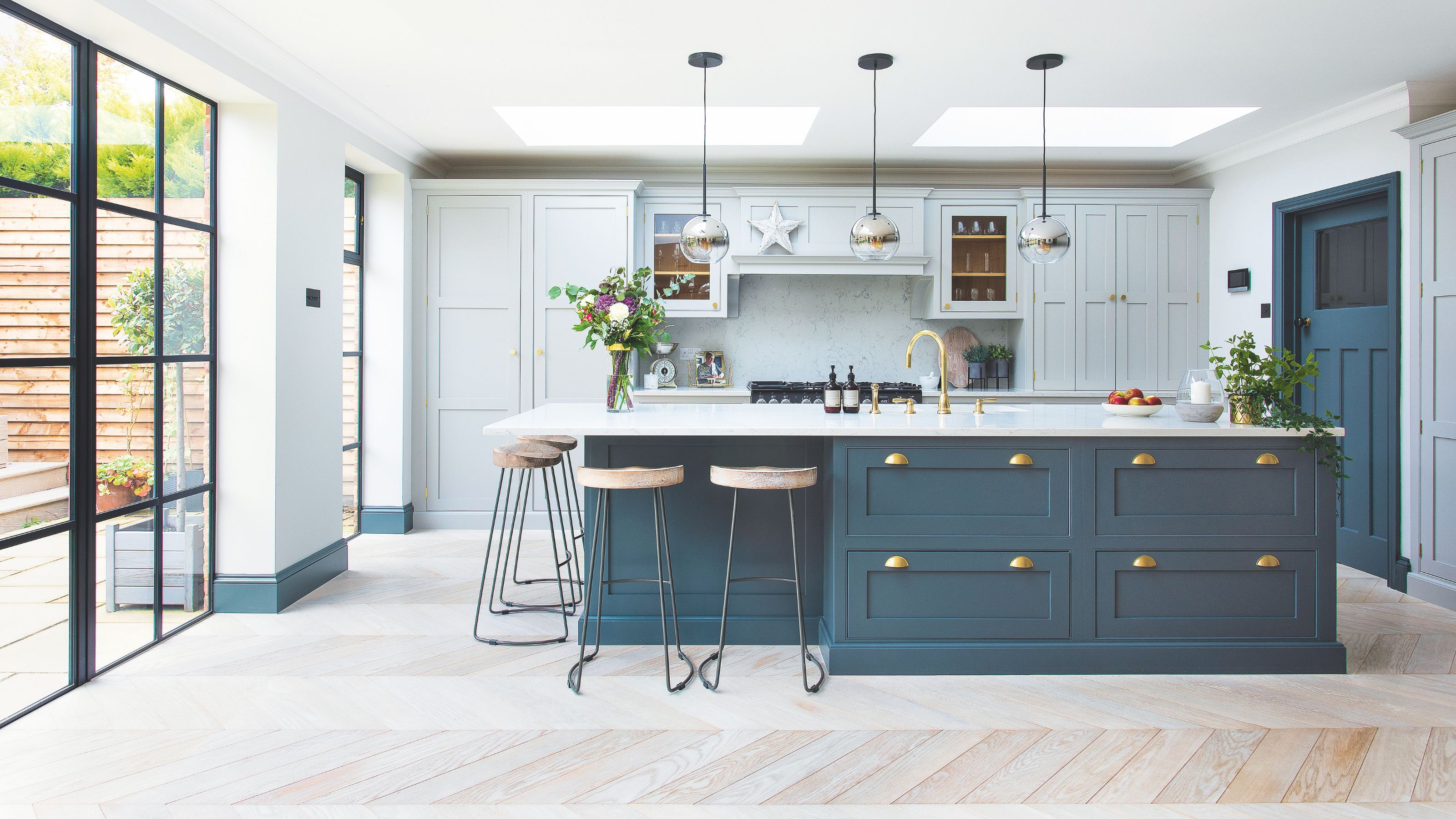
Hard floors can transform any home – but they're also magnets for dust, and prone to spills and scratches if not properly cared for. That's why regular cleaning is the key to keep them looking their best. But is it better to vacuum or mop first?
The best mops and the best vacuums will help you achieve spotless floors and there's no denying both are staple cleaning tools. And while you've probably debated vacuuming vs mopping when tackling dirty floors, chances are you don't use both during one cleaning spree.
Even if you do, you could be using them in the wrong order. That's why I've consulted the experts to find out the answer to this common cleaning dilemma: whether you should vacuum or mop first. And while you may think the answer is obvious, it's not as clear-cut as it may seem.
Why is it better to vacuum floors first?
No idea if you should vacuum or mop first? As a general rule – whether you're cleaning wooden flooring or laminate flooring – most cleaning and floorcare experts recommend reaching for your vacuum first. You'll not only achieve the best results, but more importantly, you'll protect your floors.
Here's why the experts suggest starting with your vacuum first when it comes to caring for your floors:
1. To remove loose debris
One of the key reasons to vacuum before mopping is to remove everyday debris – mess that a mop would simply spread around the floor.
'Think of vacuuming (or sweeping) as a pre-cleanse for your floors,' recommends Clare Bolland, cleaning expert from Vileda.
'It's about removing the loose particles that can hinder the effectiveness of mopping and even cause damage over time. It lifts and removes this initial layer of dust, debris, hair, pet fur and crumbs, allowing your mop to then focus on the deeper, stuck-on grime and spills for a thorough clean,' Clare says.
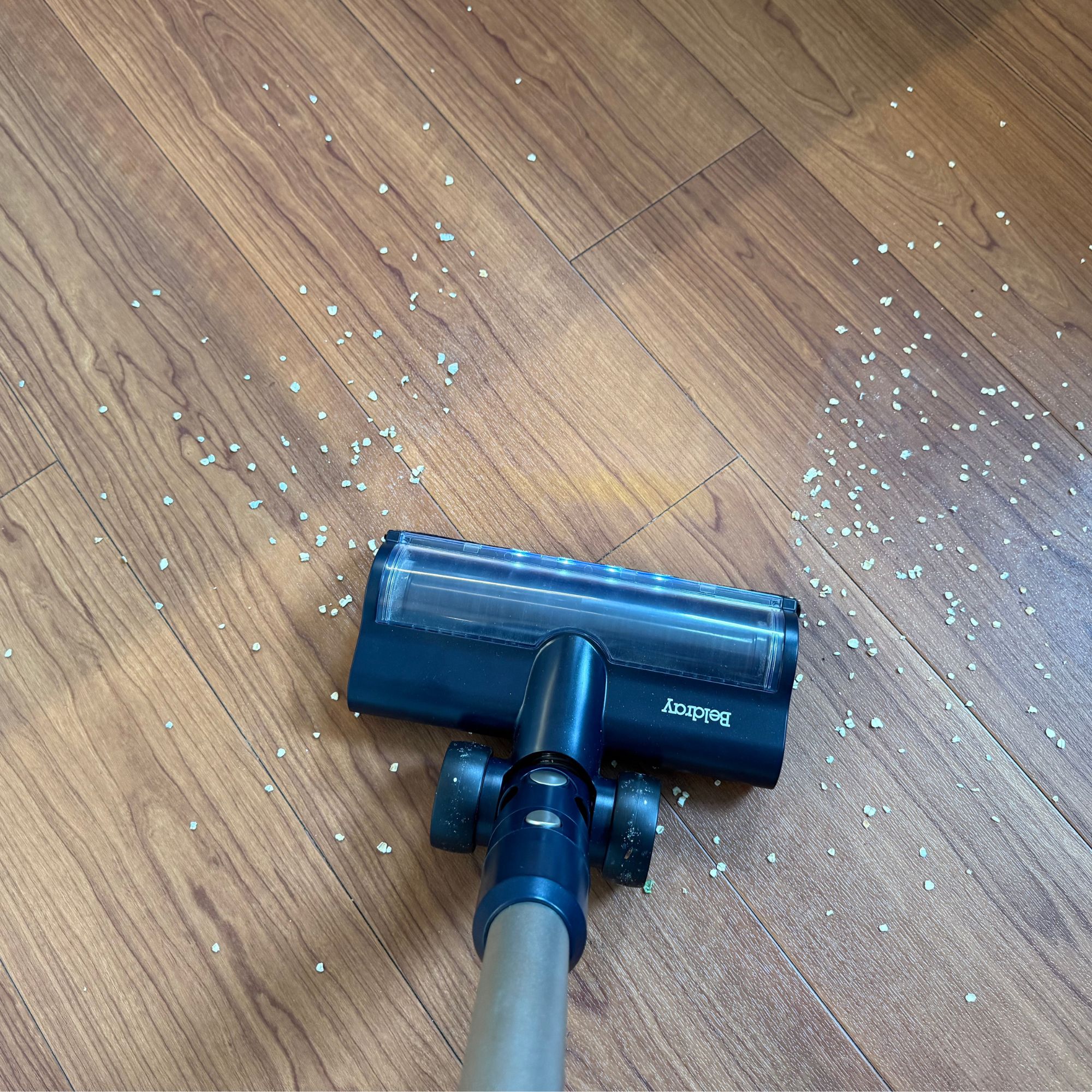
2. It helps your mop work properly
Vacuuming first will prevent floors streaking or smearing, says Polya Petrova, appliance and cleaning professional at Fantastic Services.
'Keep in mind that dry debris can mix with mop water and create streaks or mud-like smudges,' Polya says.
Mopping is also designed to remove marks and grime that can't be physically moved, Lee Trethewey from Sustainable Furniture points out.
'By vacuuming first, this allows you to get rid of all the moving pieces, leaving only the stains and marks ready for the mop to remove. You might miss the stains and grime on the flooring if you go in with a mop first,' Lee explains.
3. To protect floors from scratches
Another point for vacuuming in the vacuum or mop first debate is that it reduces the risk of scratching hard floors, as small particles won’t get dragged across the surface while wet mopping.
'This could result in abrasive wear and damage by scratching your wood or other hard surface floors,' says Colton Faddis, product manager at Vax.
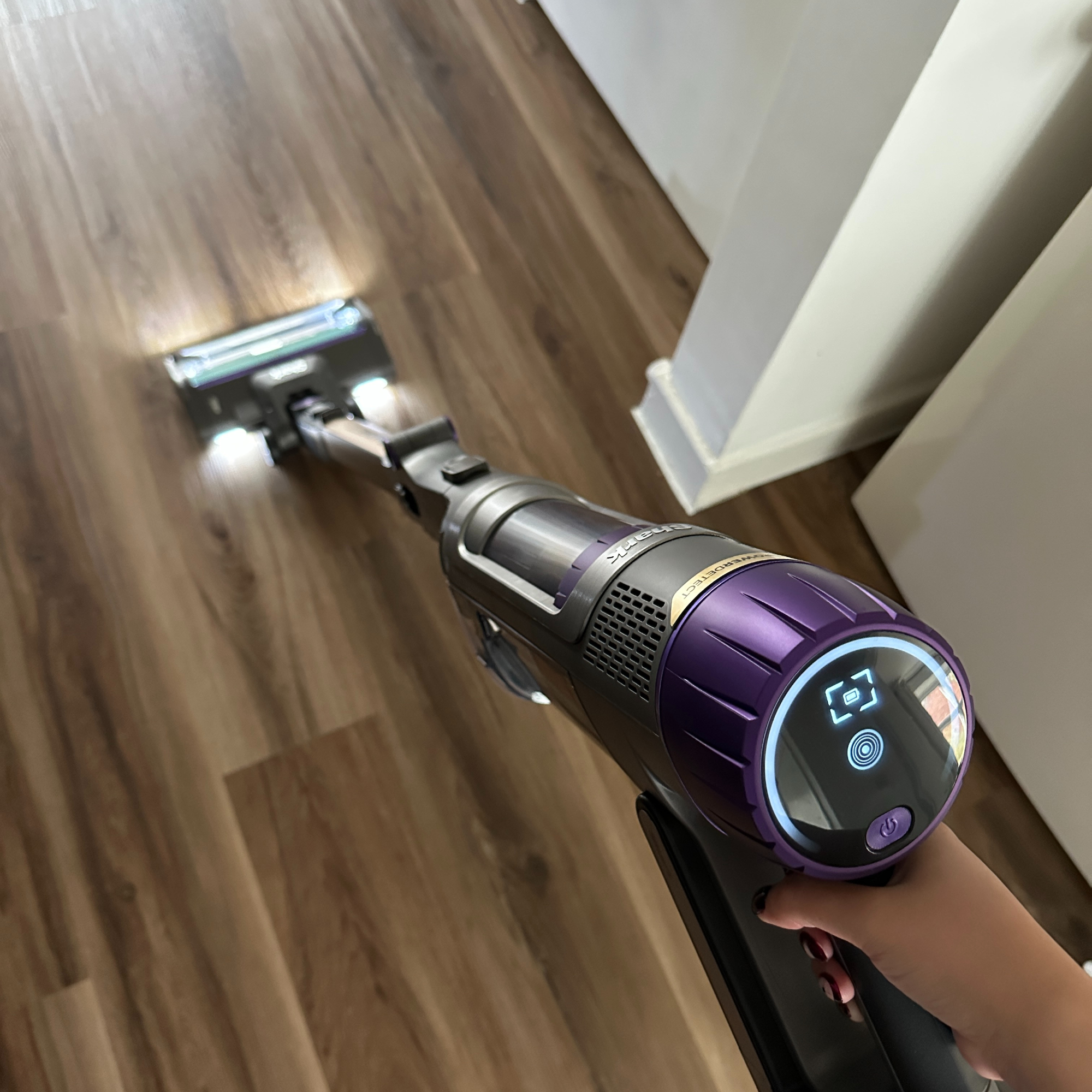
4. It's more hygienic
Let's face it, using a dirty mop to clean floors is completely pointless, and who wants to create more work for themselves?! Believe it or not though, it's a common mopping mistake.
'You reduce wear and tear on your mop by keeping it from picking up gritty particles that can damage the floor or get stuck in the mop head,' says Polya from Fantastic Services.
'Keep in mind that vacuuming first means less dirt is left to stick to the floor during mopping, making the mopping process faster and more effective,' she adds.
And if you're dealing with dusty floors, getting it wet first can be a nightmare and hard to remove from both your mop and flooring, points out Lee Trethewey. 'Starting with vacuuming ensures you're picking up all this dust first, and you don't have to worry about getting wet dust everywhere once you start mopping,' he says.

Sitting at the top of our best Shark vacuum guide, this model is ideal for hard floors and carpets alike. It's incredibly lightweight, offers unparalleled cleaning power, and is self-emptying.
When is it better to mop first?
All that said, while vacuuming is usually the best starting point in the vacuum or mop first debate, it's worth bearing in mind there are some instances where mopping first will work in your favour – and could even help you avoid any vacuum mistakes.
Here's when to reach for the mop to tackle messy floors:
1. To deal with spills and liquids
There are certain things you should never vacuum – water and sticky liquids top the list – so you should mop first in these cases.
'Whilst dry before wet is my general recommendation for your routine clean, this changes when dealing with a larger spill – like a dropped carton of milk or knocked-over cup of tea,' advises Clare from Vileda.
'In this case, your immediate priority is to contain and absorb the liquid to prevent it from spreading or soaking into the floor,' she says.
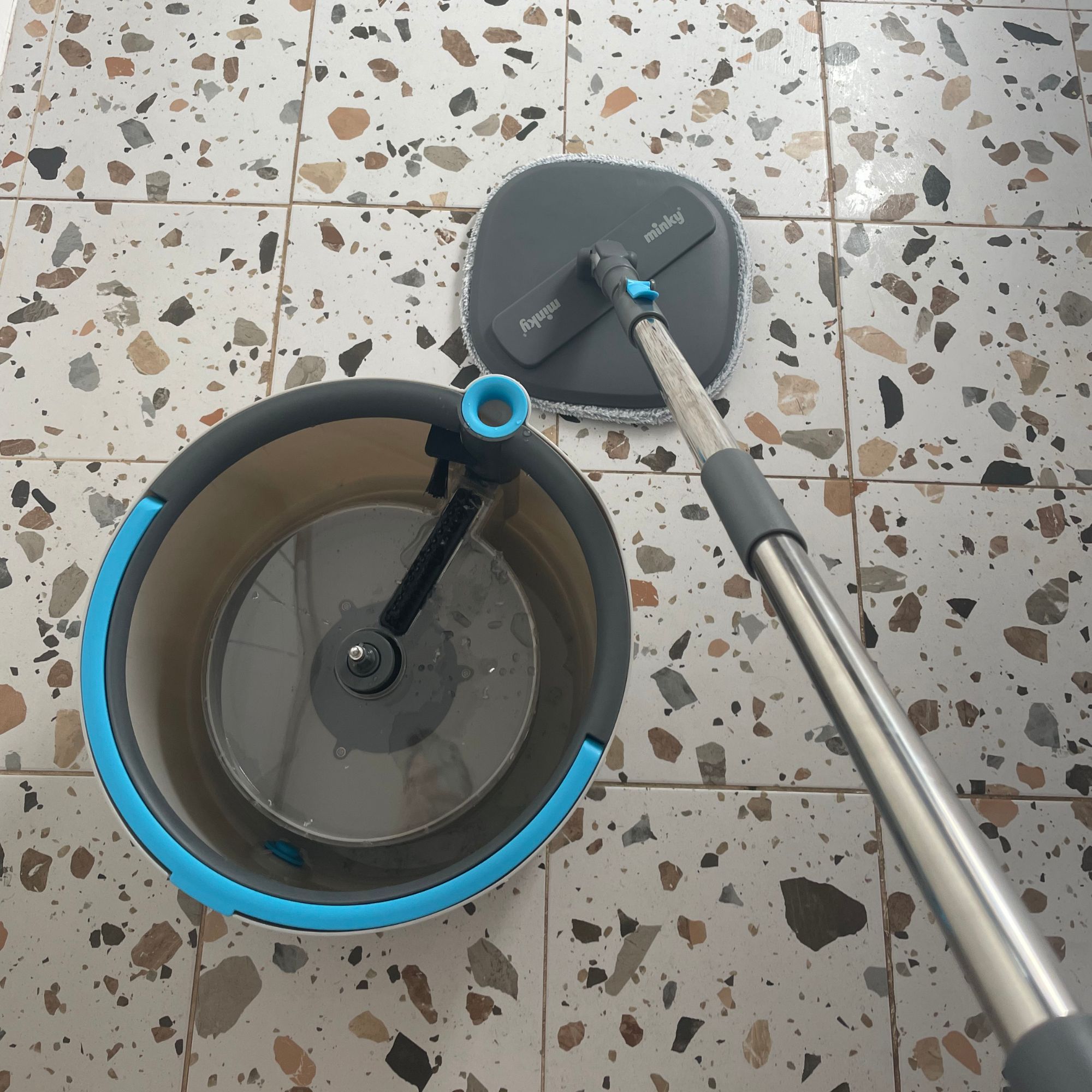
2. To tackle stubborn, dried-on grime
Ideally, you should use a cloth and warm water or a cleaning spray - like this Method Antibacterial Spray from Amazon - to remove any stubborn stains – especially if they're small, advises Lee, Sustainable Furniture.
'You don't really want to go over anything wet or tacky with a vacuum as it likely won't do anything and could damage the vacuum cleaner,' he warns.
Heavily soiled areas with dried-on grime may need moisture to loosen and lift debris, agrees Colton from Vax.
'This should be done with care and with as little pressure when wiping over the affected areas to prevent damaging your floors,' he says.
3. During allergy season
You might not realise it, but some vacuum cleaners (particularly ones without a HEPA filter) can agitate allergies and spread dust further around your home. And let's face it, that's the last thing you want when you're trying to keep allergies at bay.
This is when you'd opt to mop first, says Lee. 'If you suffer from hay fever, asthma, or a dust allergy, allergy-friendly vacuum cleaners are often recommended.'
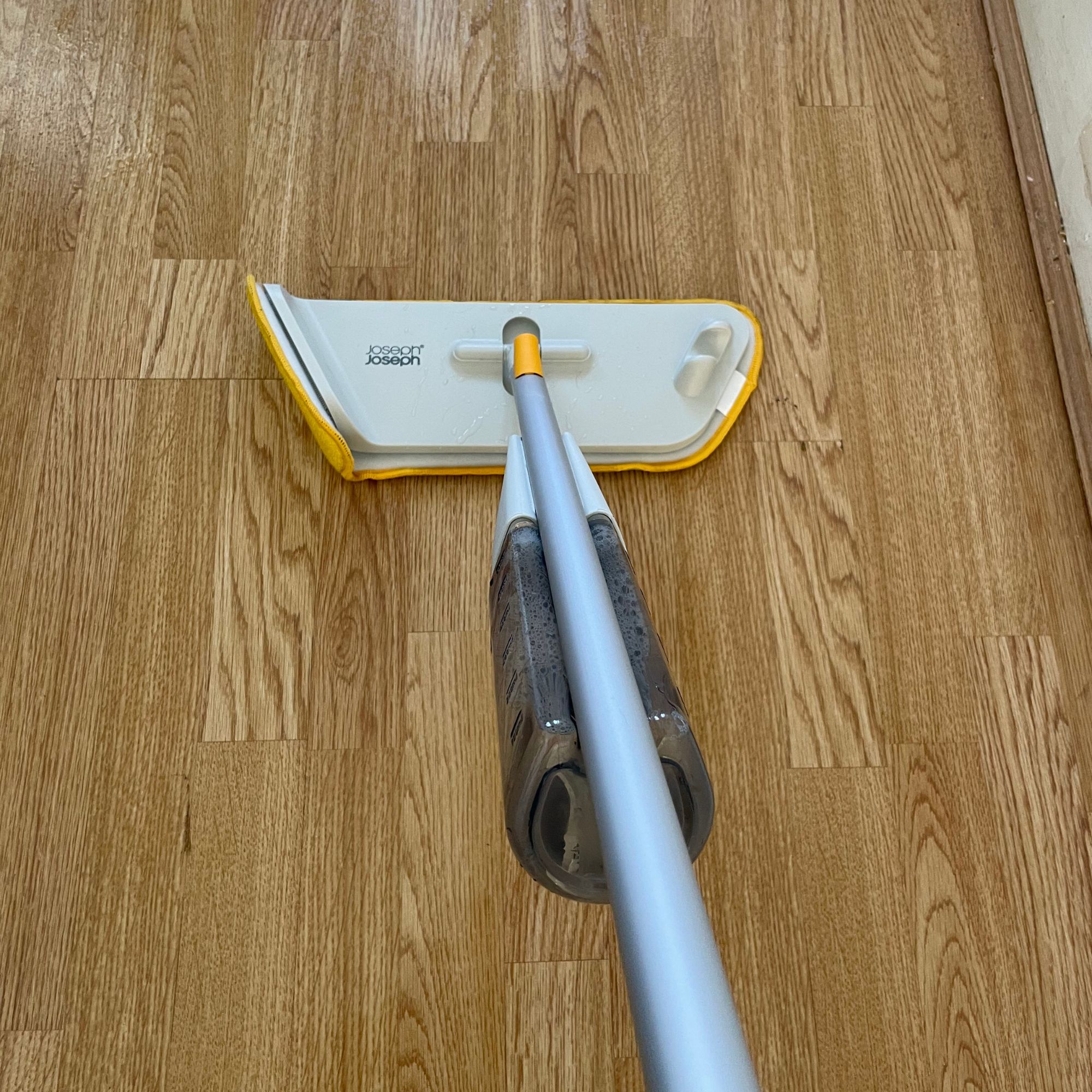
4. For hard-to-reach areas
Lastly, if you're debating whether you should vacuum or mop first, the humble mop earns a point for its ability to access tricky spots that a vacuum (particularly larger models) would struggle to get to.
'In very tight corners or textured flooring, mopping might help reach spots that the vacuum cannot access,' advises Mia Waugh, floor care specialist at Bissell.

Rated best overall mop in our buying guide for being easy to use and store, it's perfect for everyday cleaning. The spinning mop head works wonders at accessing every nook and cranny too.
FAQs
What are the 5 steps in cleaning the floor?
Colton Faddis at Vax says follow these five steps to achieve gleaming floors:
- Remove furniture and other items from the floor to enable a thorough clean.
- Vacuum to remove loose surface dirt and debris that may otherwise damage floors when mopping.
- Mop or steam hard floors, ensuring you rinse the mop head every few wipes, or change your steamer's cleaning pad if necessary to avoid spreading dirt.
- Open windows if there is a breeze or on warmer days to help floors to dry quicker, before replacing furniture.
- Discard any leftover water, wring out the mop or remove pads from your steam cleaner for washing, then put away.
What is the most hygienic way to mop floors?
The golden rule to follow is to make sure you're using both clean water and a clean mop head. 'Use a clean mop head every time, and keep in mind that dirty mops spread bacteria,' says Polya, Fantastic Services.
'If using a traditional mop, use the two-bucket method – one bucket for clean water and one for rinsing the dirty mop. Mix hot water and disinfectant which kills bacteria. Always work in sections, mopping in small areas and rinsing frequently,' she advises.
Claire from Vileda believes the drying stage after mopping is often underestimated in its importance for hygiene. 'When your floor remains damp for an extended period, it creates an ideal environment for bacteria to thrive, so ensure you allow the floor to dry properly after mopping,' she recommends.
There you have it – so whether you vacuum or mop first really depends on the situation. If you pay attention to both the type of floor and mess you're dealing with, you can't go wrong!
Get the Ideal Home Newsletter
Sign up to our newsletter for style and decor inspiration, house makeovers, project advice and more.
You must confirm your public display name before commenting
Please logout and then login again, you will then be prompted to enter your display name.
-
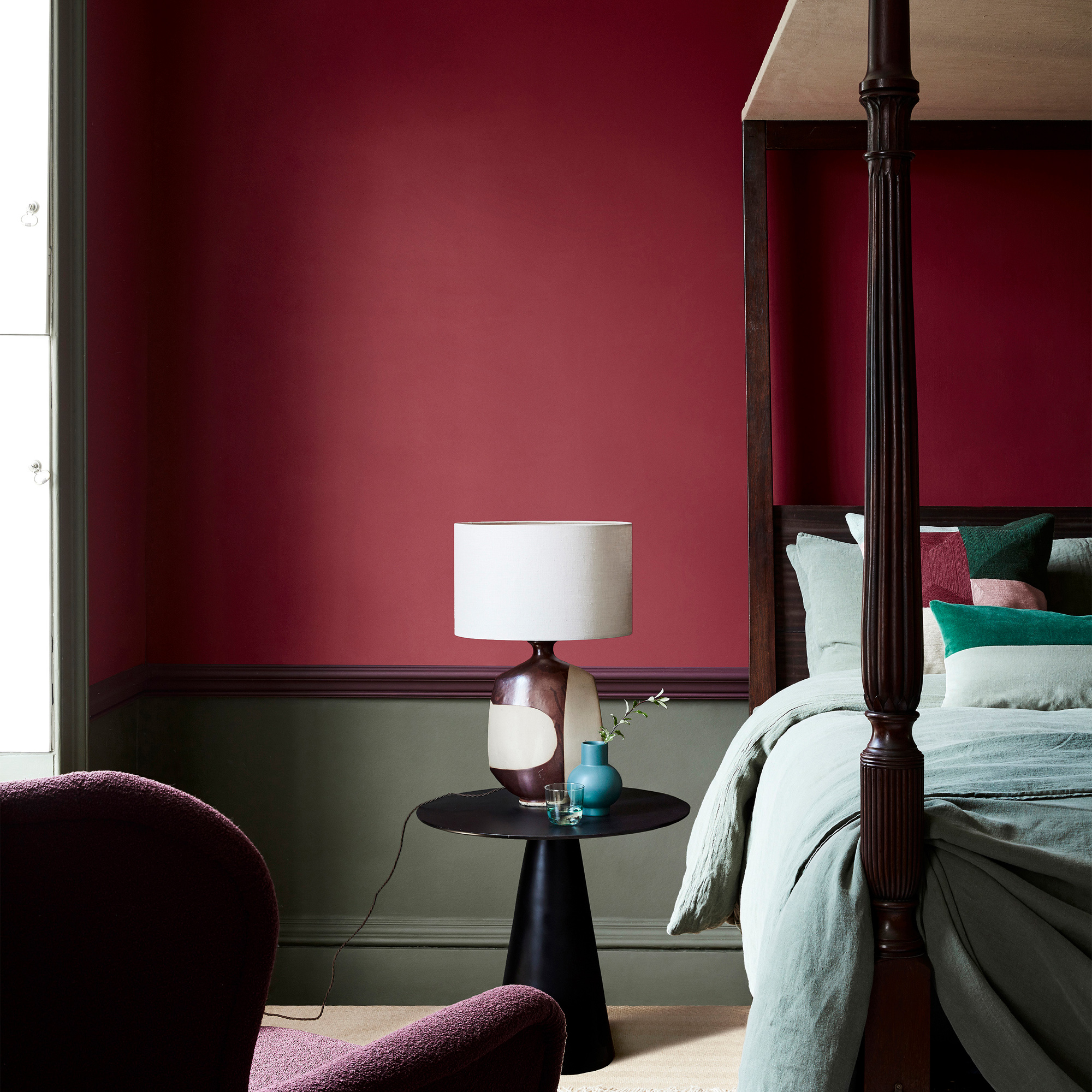 Interior experts reveal the bedroom colours that are officially out of style in 2025 – and the shades replacing them
Interior experts reveal the bedroom colours that are officially out of style in 2025 – and the shades replacing themThese are the new colourways you'll want on your radar
By Amy Lockwood
-
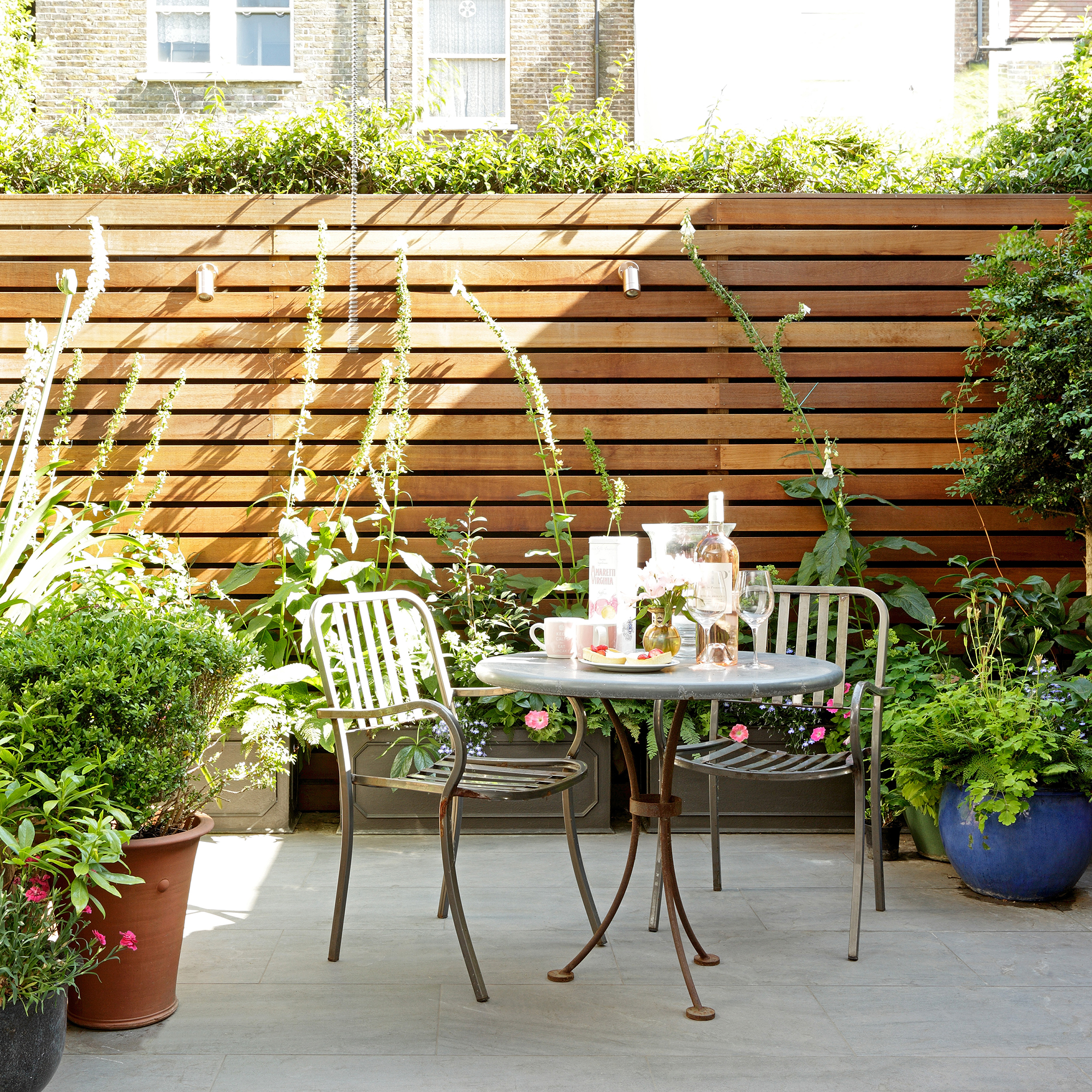 These are the 5 best climbing plants to transform an urban courtyard garden into a blooming oasis, according to garden experts
These are the 5 best climbing plants to transform an urban courtyard garden into a blooming oasis, according to garden expertsFill your courtyard with beautiful flowers this summer
By Kezia Reynolds
-
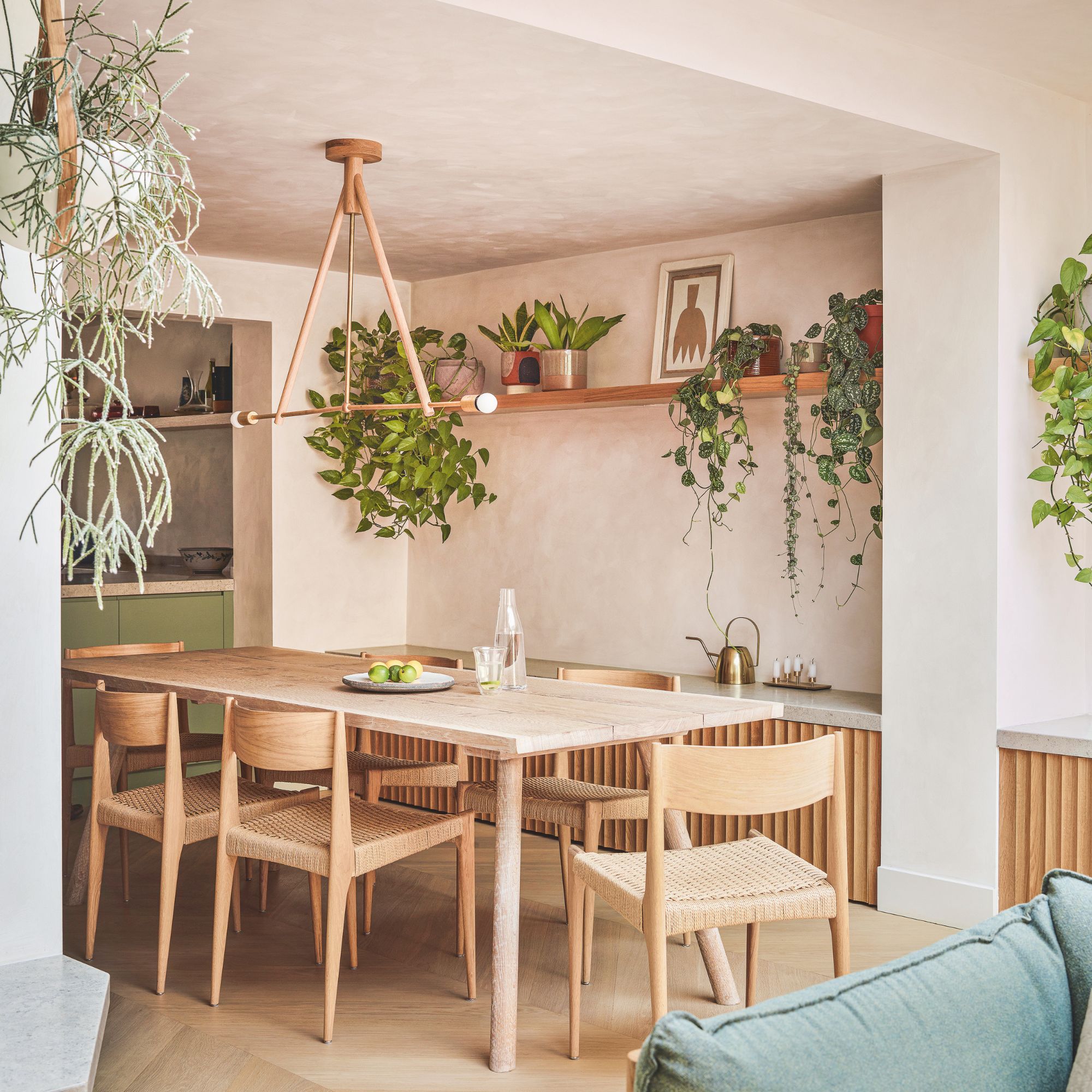 Experts warn these flooring choices will make it harder to sell your home — why it may pay off (quite literally) to replace them before you move
Experts warn these flooring choices will make it harder to sell your home — why it may pay off (quite literally) to replace them before you moveCertain flooring choices can increase the value of your home by up to 5%
By Lauren Bradbury